Investigate the intricate intersection of bisexuality and the Bible, delving deep into interpretations, cultural contexts, and faith-based perspectives.
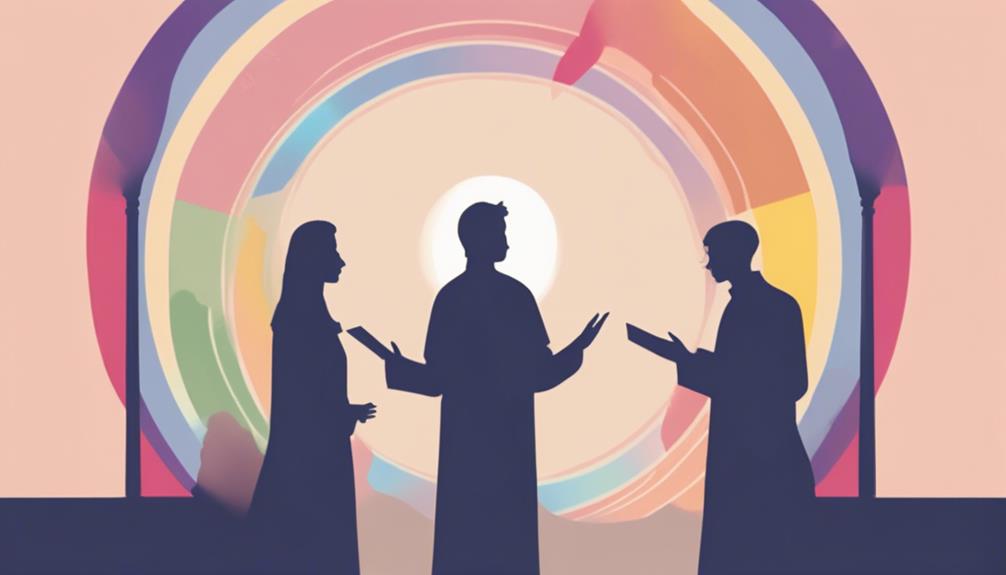
Bisexuality in the Bible
As the old saying goes, 'the devil is in the details,' isn't it? When it comes to understanding bisexuality in the context of the Bible, it's a complex, nuanced conversation that isn't as black and white as you might think.
The interpretations are vast and varied, and the cultural and historical contexts add additional layers of complexity. So, how do we reconcile bisexuality with faith? Stick around, we've only just begun to scratch the surface.
Key Takeaways
- Bisexuality, as a modern concept, is not explicitly addressed in biblical texts, leading to various interpretations.
- Ancient societal norms and power dynamics shaped biblical views on sexuality, which can provide a nuanced perspective on bisexuality.
- The journey to reconcile bisexuality with faith can lead to a deeper spiritual life and doesn't negate one's commitment to spirituality.
- Biblical ambiguity and personal beliefs influence interpretations of controversial scriptures, affecting the understanding of bisexuality in the Bible.
Understanding Bisexuality: A Primer
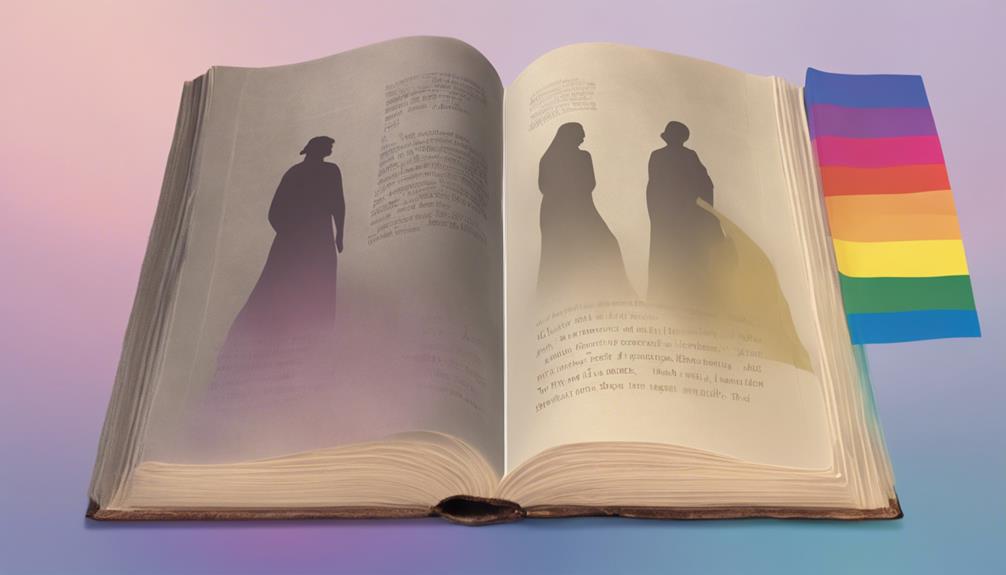
To fully grasp the topic at hand, it's crucial that you first understand bisexuality, a sexual orientation where an individual is attracted to both men and women. This understanding lays the foundation for comprehending the nuances and complexities involved.
The first stage in this exploration is 'Identity Acceptance'. It's an internal process where a person acknowledges their attraction to both genders. Acceptance can be a journey, often accompanied by confusion and doubt due to societal norms and expectations. It's not uncommon for individuals to initially identify as heterosexual or homosexual before recognizing their bisexual nature. This fluidity in sexual orientation can be misconstrued leading to 'Bisexual Stereotypes'.
These stereotypes can be damaging. They perpetuate myths that bisexuality is a phase or an indecisive state, which fosters misinformation and misunderstanding. Such stereotypes can invalidate the experiences of bisexual individuals, impede their acceptance process, and contribute to a phenomenon known as 'bisexual erasure' where their identity is negated or overlooked.
Understanding bisexuality is essential to further discuss its interpretation in the Bible. This comprehension helps to challenge stereotypes, foster acceptance, and pave the way for a more inclusive interpretation of biblical texts.
Biblical Interpretations of Sexuality
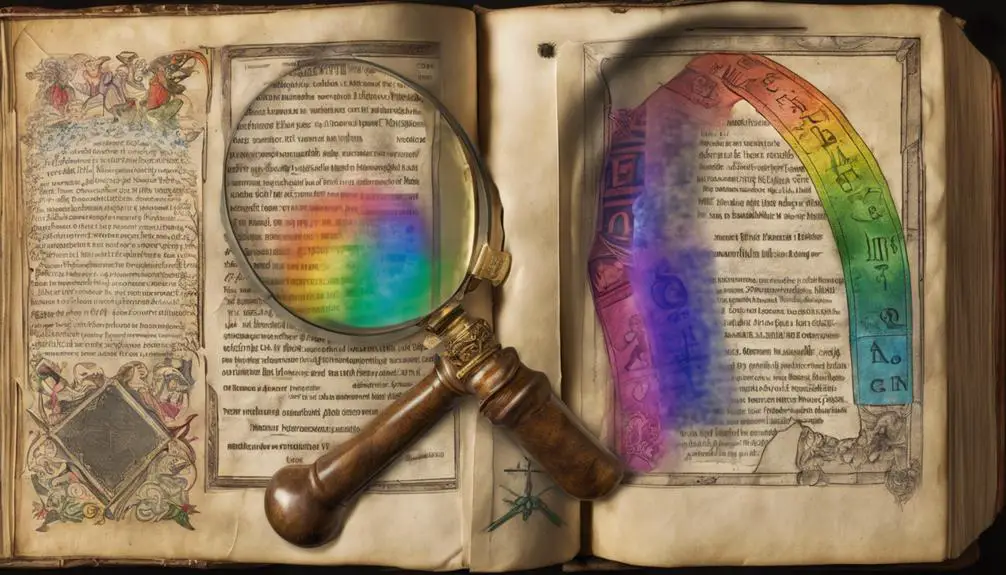
With a clearer understanding of bisexuality, you're now equipped to explore how sexuality, particularly bisexuality, is interpreted within biblical contexts. It's crucial to note that interpretations of biblical texts on sexuality, specifically bisexuality, are numerous and often contested.
The Bible, as an ancient text, doesn't explicitly address modern concepts of sexual orientation or gender identity. Instead, it provides guidelines, stories, and principles related to sexual ethics and behaviour that have been interpreted in various ways.
Here's a table to help you visualize some divergent interpretations:
Biblical Principle |
Traditional Interpretation |
Progressive Interpretation |
|---|---|---|
The Creation Story |
Sexuality is binary, mirroring male and female creation. |
Gender identity and sexuality are fluid, reflecting the diversity of creation. |
The Sodom and Gomorrah Story |
Homosexual behaviour is sinful. |
The sin was inhospitality and violence, not homosexuality. |
Paul's Letters |
Condemnation of same-sex relations. |
Condemnation of exploitative sexual practices, not consensual same-sex relations. |
Controversial Scriptural References
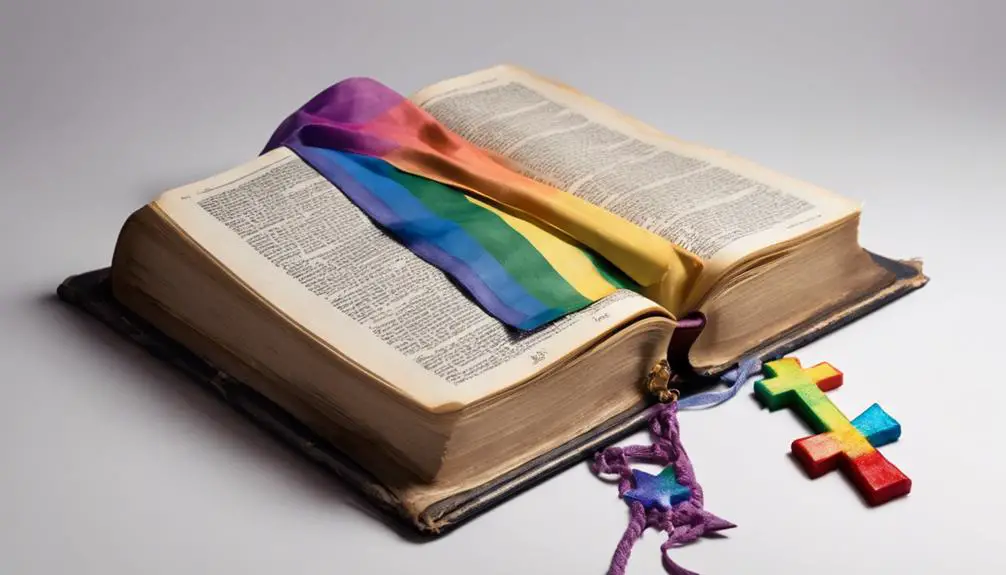
Diving into controversial scriptural references, you'll encounter several passages that have sparked heated debates regarding their interpretation and implications for bisexuality. Scriptural ambiguity often lies at the heart of these debates, with interpretations hinging largely on linguistic nuances and cultural context.
Consider the original Hebrew and Greek texts; the complexity of Biblical translation can lead to varied readings. For example, the term 'arsenokoitai' in 1 Corinthians 6:9 is often translated as 'homosexuals,' but its precise meaning remains uncertain. Some scholars argue that it could refer to a specific cultural practice rather than a broad condemnation of same-sex relations.
Likewise, the story of David and Jonathan's close friendship in 1 Samuel has been viewed by some as hinting at a romantic relationship, though the text doesn't explicitly state this. The vagueness of these passages leaves ample room for differing views, making any absolute conclusions difficult to ascertain.
These examples highlight how interpretation can be influenced by personal beliefs and societal norms, resulting in diverging perspectives on bisexuality's place within Biblical discourse. The ongoing discussions underscore the need for thoughtful, careful analysis when approaching such sensitive topics.
Historical Context of Biblical Sexuality
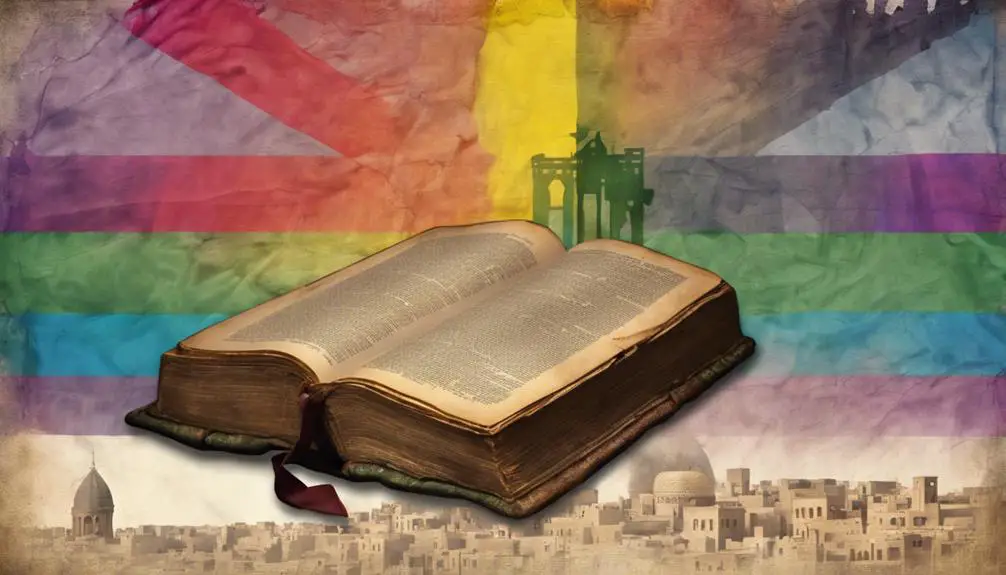
In considering bisexuality within a biblical context, it's crucial to understand the cultural and socio-historical backdrop against which these scriptures were written. Cultural influences and gender roles significantly shaped the narratives and laws recorded in both the Old and New Testaments.
Ancient Near Eastern societies, for example, viewed sexual relations through a lens of power dynamics and honor, rather than a binary concept of heterosexuality and homosexuality. It's important to grasp that perceptions of sexuality, including bisexuality, have greatly evolved over time.
Consider the table below:
Cultural Period |
Predominant View of Sexuality |
|---|---|
Ancient Near East |
Power dynamics and honor |
Biblical Times |
Law-based and procreative |
Modern Times |
Diverse and individualistic |
Gender roles also played a significant part in shaping biblical sexuality. In patriarchal societies, maintaining family lineage was paramount. Hence, sexual relations were primarily viewed as a means of procreation. These historical elements can provide a more nuanced understanding of bisexuality within the biblical context. It's a reminder that our modern views are just that – modern, and not always reflective of past realities.
Reconciling Bisexuality With Faith
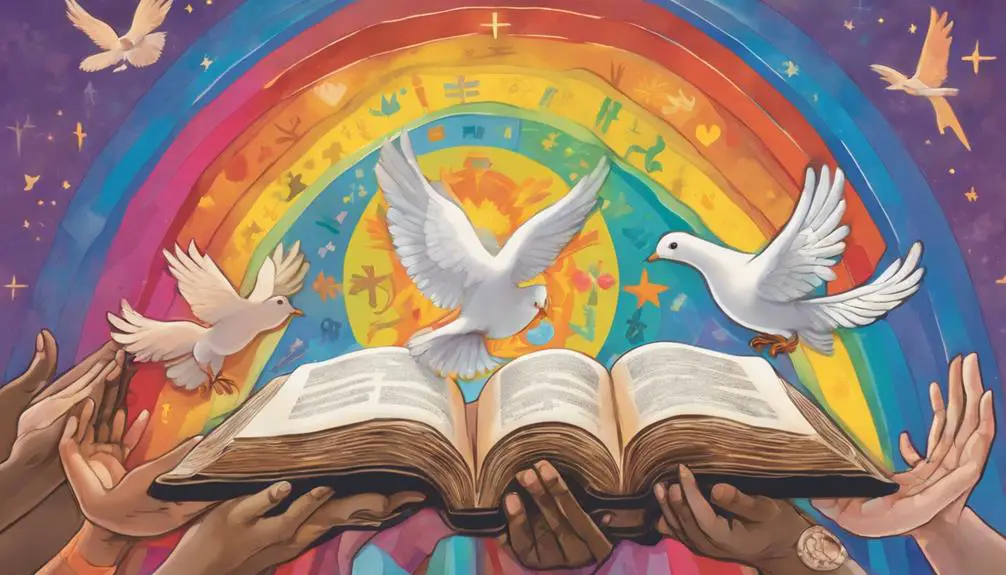
Understanding these historical nuances, you might now grapple with reconciling your bisexual identity within your faith framework. This reconciliation isn't an insurmountable task. In fact, it can be a journey towards a more profound and personalized spiritual experience.
Faith-based acceptance does exist, and it can be the foundation of your reconciliation process. Many religious groups and spiritual leaders now affirm and celebrate a variety of sexual orientations, including bisexuality. They argue that the essence of faith lies in love, inclusivity, and acceptance of all God's creations.
Bisexual spirituality, on the other hand, is your unique spiritual journey as a bisexual individual. It's about finding a sacred space within your faith that validates your bisexual identity. This doesn't mean you need to reinterpret religious texts or doctrines, but rather you find a way to integrate your identity into your faith. It's about understanding that one's sexual orientation doesn't negate one's spiritual commitment.
Reconciling bisexuality with faith might be challenging, but it's not impossible. It can lead to a deeper, more authentic spiritual life, marked by self-acceptance, compassion, and a deeper understanding of the divine.
Frequently Asked Questions
How Do Various Christian Denominations View Bisexuality?
You're exploring various Christian denominations' views on bisexuality. It's a complex issue with no uniform stance.
Some denominations are embracing, referencing 'Bisexual Saints' as proof of acceptance. Others maintain traditional views, citing denominational differences.
Always remember, interpretations vary widely. It's crucial to engage in respectful dialogue when discussing such topics.
What Psychological Impact Does the Bible's Alleged Condemnation of Bisexuality Have on Bisexual Believers?
The impact of biblical interpretation on your psyche can be profound. As a bisexual believer, alleged condemnation within scripture may cause internal conflict and faith struggles. You might experience guilt, confusion, or self-doubt as you try to reconcile your sexual orientation with religious teachings.
The stress could even lead to mental health issues. Remember, interpretations vary and it's crucial to find a supportive community for discussion and understanding.
Are There Any Known Biblical Figures Who Were Potentially Bisexual?
You're asking about biblical figures who might've been bisexual. While the text doesn't explicitly mention any, some interpretations suggest potential candidates.
It's a nuanced issue, with some arguing that David and Jonathan's relationship might fit modern understandings of bisexuality. However, it's crucial to remember that these are speculations based on our contemporary perceptions, not definitive truths.
We're discussing biblical interpretations, not explicitly bisexual prophets.
How Does the Concept of Bisexuality Fit Into Non-Christian Religious Texts?
You're probing how bisexuality fits into non-Christian religious texts. It's a complex matter as bisexual representation varies widely across different faiths.
Some non-Christian scriptures may be open to interpretations that acknowledge bisexuality, while others may not mention or even reject it.
To understand it fully, you'll need to dive deeper into the specific religious texts and their cultural contexts.
How Can Religious Institutions Better Support Their Bisexual Members?
To better support their bisexual members, religious institutions should foster an environment of acceptance and understanding. Incorporating supportive sermons that directly address and affirm bisexuality can help to dispel misconceptions and biases.
This, coupled with practices of faithful affirmation, can ensure that everyone feels truly welcomed and valued within their faith community. It's about creating a safe, inclusive space where all identities are acknowledged and respected.
Conclusion
In examining bisexuality in the Bible, it's clear that interpretations vary widely. Historical context and translation nuances vastly impact understanding. Controversial references often spark intense debate.
Yet, it's crucial to remember, reconciling one's bisexuality with faith is a personal journey. Engage with scripture, seek diverse perspectives, and ultimately, let your faith guide you.
The Bible's teachings undoubtedly encompass love and acceptance, regardless of sexual orientation.

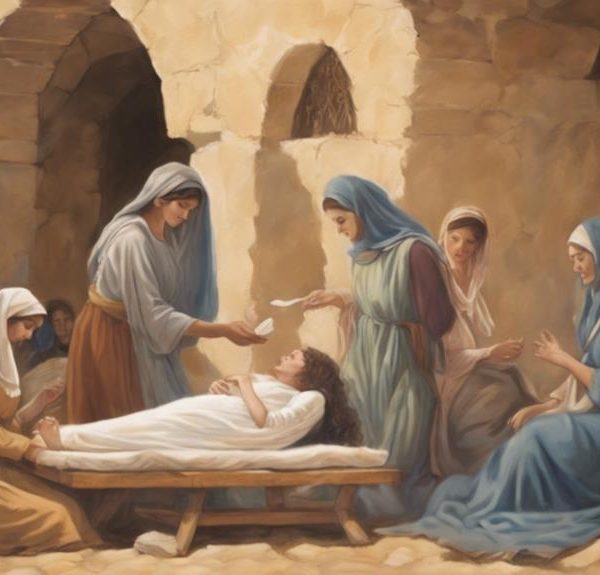

Sign up